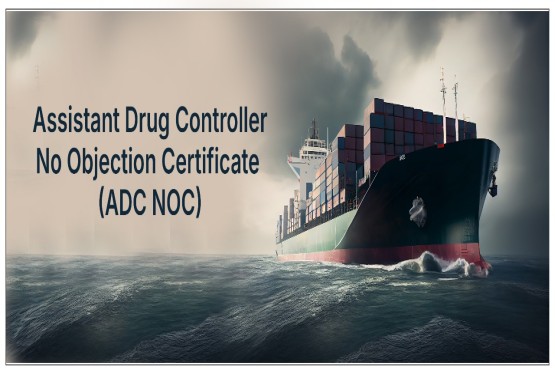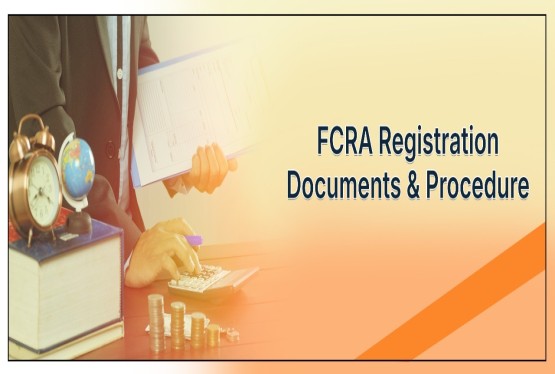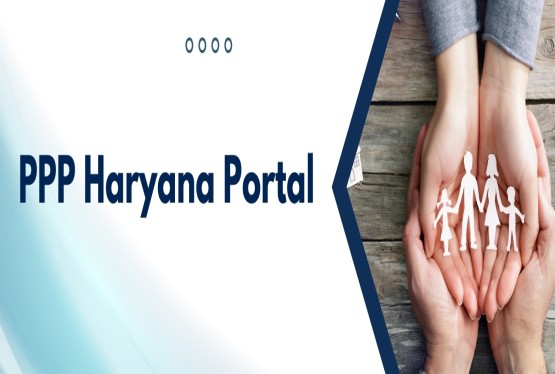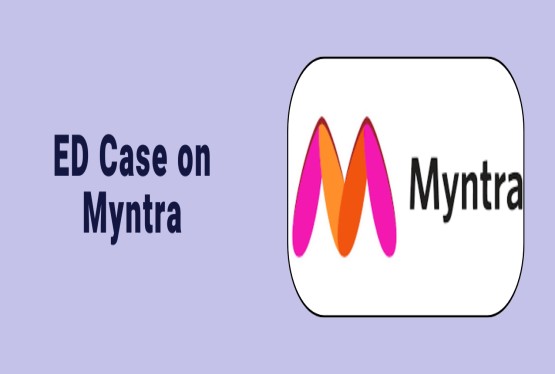A Service Level Agreement (SLA) is an important component of every contract between a service provider and a customer. It is not just a formal document, but a foundation that outlines the type, quality, and timeline of the services to be provided. It ensures transparency, accountability, and clarity, helping both parties understand their roles and responsibilities. Whether it is a cloud service provider, telecom company, or internal department within an organization, an SLA ensures service delivery meets expectations and provides remedies if performance falls short. In this article, we will explore the SLA Full Form, its meaning in business, its benefits, types, essential components, common mistakes to avoid, and best practices for creating a strong Service Level Agreement (SLA).
What is SLA Full Form?
SLA Full Form stands for Service Level Agreement. It is a formal, legally binding document created between a service provider and a customer. It defines what services will be delivered, the performance standards that must be met, how performance will be monitored, and what actions will be taken if performance falls below expectations.
The Service Level Agreement (SLA) helps in establishing trust between both parties by documenting expectations and consequences. It acts as a shield that prevents future disputes and confusion. Without a proper SLA, service delivery can suffer due to miscommunication or unmet expectations.
What Does SLA Mean in Business?
In business, a Service Level Agreement (SLA) is a written commitment between a company and a service provider. It defines specific services, the expected level of performance, and how the service delivery will be measured. It could be related to internet speed, uptime of systems, response times, or security measures.
For example, an internet service provider may promise 99.9% uptime in its SLA. If the service falls below this uptime, the agreement will define what compensation the customer is entitled to, such as service credits. In this way, an SLA protects both parties, ensuring the customer receives reliable service and the provider gets clear guidelines on expectations.
Why Do I Need an SLA?
Having a Service Level Agreement (SLA) is important in any vendor relationship, especially in the IT and technology sector. The main reason for having an SLA is to ensure that both the client and the vendor are on the same page regarding what service will be delivered, how it will be measured, and what happens if those standards are not met.
The SLA documents the details of all services, including performance metrics, availability, and timelines. This avoids ambiguity and ensures that no party can claim ignorance in case of a dispute. The SLA is also aligned with the business or technology goals of the company, helping ensure the service provided supports these goals effectively.
Who Provides the Service Level Agreement (SLA)?
In most cases, the Service Level Agreement (SLA) is initially drafted by the service provider. They may have standard SLA templates with different service levels based on pricing. However, these SLAs often favor the vendor and may not cover all the specific needs of the customer.
Therefore, the customer should always review the SLA with legal counsel and negotiate terms that align with their business requirements. When a company sends a Request for Proposal (RFP) to vendors, it should include its own expectations for service levels. This helps vendors prepare accurate pricing and proposals based on realistic service capabilities.
What’s in a Service Level Agreement (SLA)?
A well-crafted Service Level Agreement (SLA) should include several key elements. First, it must describe the services being provided in detail, including any services that are specifically excluded. Second, it should define the performance levels or metrics that the vendor is expected to meet.
Next, it must outline the responsibilities of each party involved. This includes what the customer must do to support service delivery. For example, if the customer needs to provide timely access or data to the provider, this should be clearly stated. The SLA should also specify what penalties or remedies will apply if service levels are not achieved.
Lastly, the SLA must include procedures for adding or removing metrics, resolving disputes, and updating the agreement as business needs evolve.
What are the benefits of an SLA?
A Service Level Agreement (SLA) provides several key benefits that enhance the relationship between the customer and the service provider:
Accountability
An SLA clearly assigns responsibilities to both parties. This ensures that everyone knows what is expected of them and can be held accountable for meeting those expectations.
Clarity of Expectations
By listing services, timelines, and quality metrics, an SLA prevents miscommunication. Customers know what service level to expect, and vendors understand what they must deliver.
Conflict Resolution
SLAs provide predefined steps to resolve service disputes. Instead of arguing about issues, both parties follow the agreed-upon process to address problems efficiently.
Customer Experience
When performance is clearly defined and monitored, customers receive better service. This leads to higher satisfaction and trust.
Legal Protection
SLAs offer legal protection by formally recording service obligations. In case of litigation or breach, this document provides solid evidence of agreed-upon terms.
What Are the Different Types of SLAs?
There are several types of Service Level Agreements (SLAs) based on the nature of services and the structure of the client-provider relationship:
-
Customer-based SLA: This type is tailored to an individual customer and includes all services used by that customer. It considers the specific requirements and expectations of that client.
-
Service-based SLA: This agreement is based on a specific service and is applicable to all customers using that service. For example, a cloud provider might offer a standard SLA for storage services that applies to all clients.
-
Operational SLA: These are focused on the internal processes or operational aspects of service delivery, such as system uptime, maintenance windows, or helpdesk response time.
-
Multi-level SLA: This combines customer-based and service-based aspects. It provides layered SLA terms that apply to different groups or services, depending on the complexity of the organization or client needs.
What are the main components of an SLA?
A complete Service Level Agreement (SLA) contains both service and management elements.
Service Elements
-
Detailed description of services: Specifies what services are being provided, including inclusions and exclusions.
-
Availability terms: Defines when and how the service should be available. It may differ for working hours and weekends.
-
Responsibilities: Explains the duties of both parties, including who is responsible for what.
-
Escalation procedures: Outlines how issues will be reported and escalated if not resolved.
-
Cost and trade-offs: Describes the pricing and service trade-offs, especially for premium services.
Management Elements
-
Measurement methods: Defines how performance will be tracked and which tools will be used.
-
Reporting frequency: Explains how often reports will be generated and who will receive them.
-
Dispute resolution: Provides a formal process to resolve disagreements.
-
Indemnification: Includes clauses to protect the customer in case of third-party claims.
-
Update mechanism: Allows the SLA to be revised periodically as business needs change.
What Is an Indemnification Clause?
An indemnification clause is a legal provision that protects the customer from losses due to the service provider’s mistakes or failures. It requires the vendor to compensate the customer for any costs, such as third-party lawsuits, that arise from the provider’s breach of warranty.
Many standard SLAs from vendors do not include this clause. Customers should ask their legal team to add a simple indemnification clause to ensure adequate protection, even if the provider wants to negotiate it further.
Is a Service Level Agreement (SLA) Transferable?
When a service provider is acquired or merges with another company, customers often assume that the Service Level Agreement (SLA) will continue unchanged. However, this is not always true. The new owner may choose not to honor the original SLA terms. It’s important to review the SLA after such events and be ready to renegotiate if necessary. Most new owners will try to maintain good relationships with existing customers, so there is usually room for discussion.
How can i verify Service Levels?
Most service providers offer access to performance statistics through a web portal. These statistics help customers verify whether the agreed service levels are being met. If the provider fails to meet the SLA targets, customers can claim service credits or penalties as defined in the agreement.
It is recommended that clients and providers agree on how performance will be measured and reported during contract negotiations. For critical services, customers should use third-party monitoring tools to capture and validate performance data objectively.
What Kind of Metrics Should Be Monitored?
The metrics used in a Service Level Agreement (SLA) depend on the type of service provided. However, these should be easy to measure and important to the customer’s operations. Below are common types of SLA metrics:
-
Measures the time a service is available for use. It could be expressed as a percentage, such as 99.9% uptime during business hours.
-
Tracks errors or failures in service delivery, such as missed deadlines or incomplete tasks.
-
In application development, tools may be used to measure software quality, such as coding standards and defect density.
-
Tracks compliance with security protocols, like timely patching or virus updates.
-
Ties service delivery to business outcomes, using existing Key Performance Indicators (KPIs) to evaluate vendor contribution.
What to consider when selecting SLA metrics?
When choosing metrics for your Service Level Agreement (SLA), consider the following:
-
Motivate the Right Behavior: Metrics should encourage service providers and customers to work toward the desired outcome. Poorly chosen metrics may lead to unexpected or undesired actions.
-
Keep Metrics Under Provider’s Control: It’s unfair to penalize a vendor for delays caused by the customer. Measure only those aspects that the vendor can control.
-
Easy to Collect: Use metrics that can be gathered automatically. Avoid manual collection as it can be inaccurate and time-consuming.
-
Avoid Too Many Metrics: Don’t overload the SLA with metrics. Focus on the most important ones that truly matter.
-
Set Realistic Baselines: Ensure that performance targets are attainable. Adjust them if historical data shows the need for revision.
-
Define Metrics Clearly: Be specific. For example, if "response time" means replying to an incident, specify whether an automated message qualifies or not.
What Are Common SLA Mistakes?
Several common mistakes can reduce the effectiveness of a Service Level Agreement (SLA):
Not Defining SLAs Early
Delaying the creation of an SLA until after a contract is signed can lead to misunderstandings and mismatched expectations. Important service details may be overlooked or assumed, causing conflicts later. It's essential to define SLAs during the negotiation phase to ensure mutual agreement on performance standards from the start.
Too Many Metrics
Including too many performance indicators can complicate the SLA and dilute focus on what truly matters. This can overwhelm both the service provider and the customer, making it hard to track progress or identify critical failures. It’s better to prioritize a few meaningful and measurable metrics that align with business goals.
Ignoring the Provider’s Perspective
Creating an SLA without considering the vendor’s operational limitations may lead to unrealistic demands. This can cause friction, service delays, or even contract failure. A balanced SLA should address customer expectations while also being feasible for the provider to deliver consistently.
Vague Calculations
If the SLA does not clearly define how performance metrics are calculated, it can result in confusion and disputes. For instance, unclear definitions of "uptime" or "response time" may lead to disagreements about whether service standards were met. Every metric should include precise formulas and measurement methods.
Treating SLAs as Static Documents
SLAs should be dynamic and reviewed regularly as business needs, technology, or workloads change. Treating them as one-time documents can lead to outdated service terms that no longer reflect current requirements. A regular review process ensures the SLA stays relevant and effective over time.
Are SLAs Negotiable with Cloud Providers?
Many cloud vendors are less flexible about modifying their standard Service Level Agreements (SLAs). They provide services at scale and rely on standard terms to maintain margins. However, it is still important to review the SLA carefully and understand any risks involved. For large or strategic deals, customers may be able to negotiate special terms, especially if the vendor sees long-term value in the relationship.
Can SLAs Be Shared Across Vendors?
Yes, customers can create shared SLAs that apply to multiple vendors. These agreements take into account the interdependence between service providers. A joint SLA can help in cases where multiple vendors are involved in delivering a complete service. In addition, Operating Level Agreements (OLAs) can be used to define how different teams or vendors interact with each other to ensure end-to-end service quality.
Do I Need an SLA with Outcome-Based Pricing?
Even when pricing is tied to business results instead of specific tasks, an SLA is still essential. It helps measure whether the service provider is contributing to the desired outcomes. In this case, the SLA focuses on performance indicators rather than operational details. Clear definitions, measurable results, and documented responsibilities are key to ensuring success in an outcome-based contract.
Can We Use SLAs for Shadow IT?
Yes, IT departments can apply SLA principles to shadow IT—systems or software used without formal IT approval. By creating SLAs for these tools, organizations can monitor and manage performance, ensuring reliability and reducing risks.
What Happens If SLAs Are Not Met?
If the provider fails to meet SLA commitments, the contract usually includes service credits or penalties. A portion of the provider’s monthly fee is held at risk and can be deducted when performance falls short. This creates an incentive for the provider to maintain high standards. However, the purpose of SLAs is not punishment. Best-in-class companies use SLA performance data as a starting point for discussions on how to improve service and address issues constructively.
What are earn Backs?
Some providers include an "earn back" clause, allowing them to recover lost service credits by performing exceptionally well for a specified period. While this may seem fair, it can weaken the impact of the service credit system if not carefully managed.
How Often Should SLAs Be Updated?
Service Level Agreements (SLAs) should not be static. As business needs, technology, and workloads change, SLAs must be revised. A good SLA includes a formal process for reviewing and updating its terms.
SLAs should be updated if:
-
Business priorities shift (e.g., moving to e-commerce increases uptime needs).
-
Technology improves (e.g., new tools improve reliability).
-
Measurement tools become more advanced.
A well-designed and regularly updated Service Level Agreement (SLA) protects both the customer and the vendor, promotes accountability, and ensures long-term success. By clearly defining roles, expectations, and remedies, an SLA becomes a powerful tool for managing service delivery effectively.
If you have any queries or need any support, you can book a consultation with Compliance Calendar LLP experts through
Email: info@ccoffice.in
Call/Whatsapp at: +91 9988424211.
FAQs
Q1. What is an SLA and why is it important?
Ans. A Service Level Agreement (SLA) is a formal contract between a service provider and a client that outlines the expected level of service, performance standards, and remedies for non-compliance. It is important because it sets clear expectations, improves accountability, and helps avoid disputes by defining measurable service commitments.
Q2. What should be included in an SLA?
Ans. An effective SLA should include:
-
A detailed description of services provided
-
Performance metrics (like uptime, response time, resolution time)
-
Roles and responsibilities of both parties
-
Penalties for SLA breaches
-
Reporting and review processes
-
Terms for revisions and dispute resolution
Q3. How often should an SLA be reviewed?
Ans. SLAs should be reviewed at least annually or whenever there are significant changes in business needs, technology, or service levels. Regular reviews ensure that the agreement remains relevant, realistic, and aligned with evolving expectations.
Q4. What happens if an SLA is breached?
Ans. If an SLA is breached, the service provider may be subject to penalties such as financial credits, service extensions, or other agreed remedies. The exact consequences depend on what is outlined in the SLA, and the breach may also lead to further discussions or contract renegotiation.
Q5. Can an SLA be customized for different clients?
Ans. Yes, SLAs are highly customizable and should be tailored to suit the specific needs and priorities of each client. Custom SLAs ensure that both parties agree on service levels, expectations, and performance metrics based on unique business requirements.
Q6. What are common mistakes to avoid when drafting an SLA?
Ans. Common SLA mistakes include:
-
Defining it too late in the contract process
-
Including too many or irrelevant metrics
-
Ignoring the service provider’s input
-
Using vague or undefined performance measures
-
Failing to review and update it regularly
Q7. How are SLA metrics measured and reported?
Ans. SLA metrics are usually tracked using automated tools and monitoring systems that log performance data (e.g., uptime, response time). Reports are then generated at regular intervals (weekly, monthly, or quarterly) to assess compliance and performance against the agreed SLA terms.












































































_crop10_thumb.jpg)







_Rules,_2025_learn_crop10_thumb.jpg)
























































































_crop10_thumb.jpg)








 in BIS FMCS_learn_crop10_thumb.jpg)










_crop10_thumb.jpg)















_crop10_thumb.jpg)





_Code C-888_learn_crop10_thumb.jpeg)
_learn_crop10_thumb.jpg)
































































_Certificate_learn_crop10_thumb.jpg)

_Certificate_(1)_crop10_thumb.jpg)















_learn_crop10_thumb.jpg)

_crop10_thumb.jpg)


















_Scheme_learn_crop10_thumb.jpg)


_learn_crop10_thumb.jpg)










